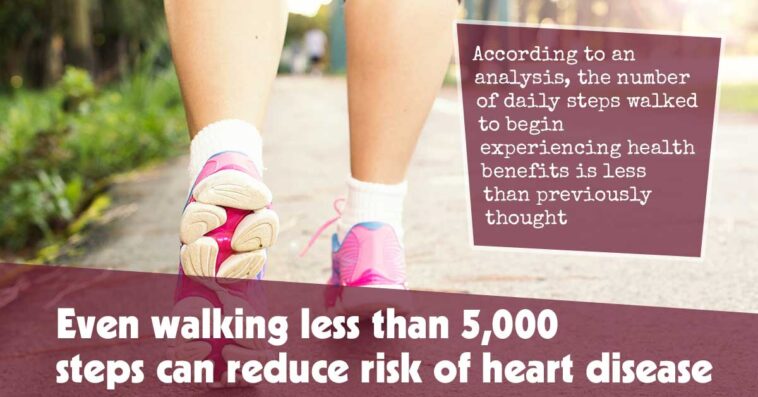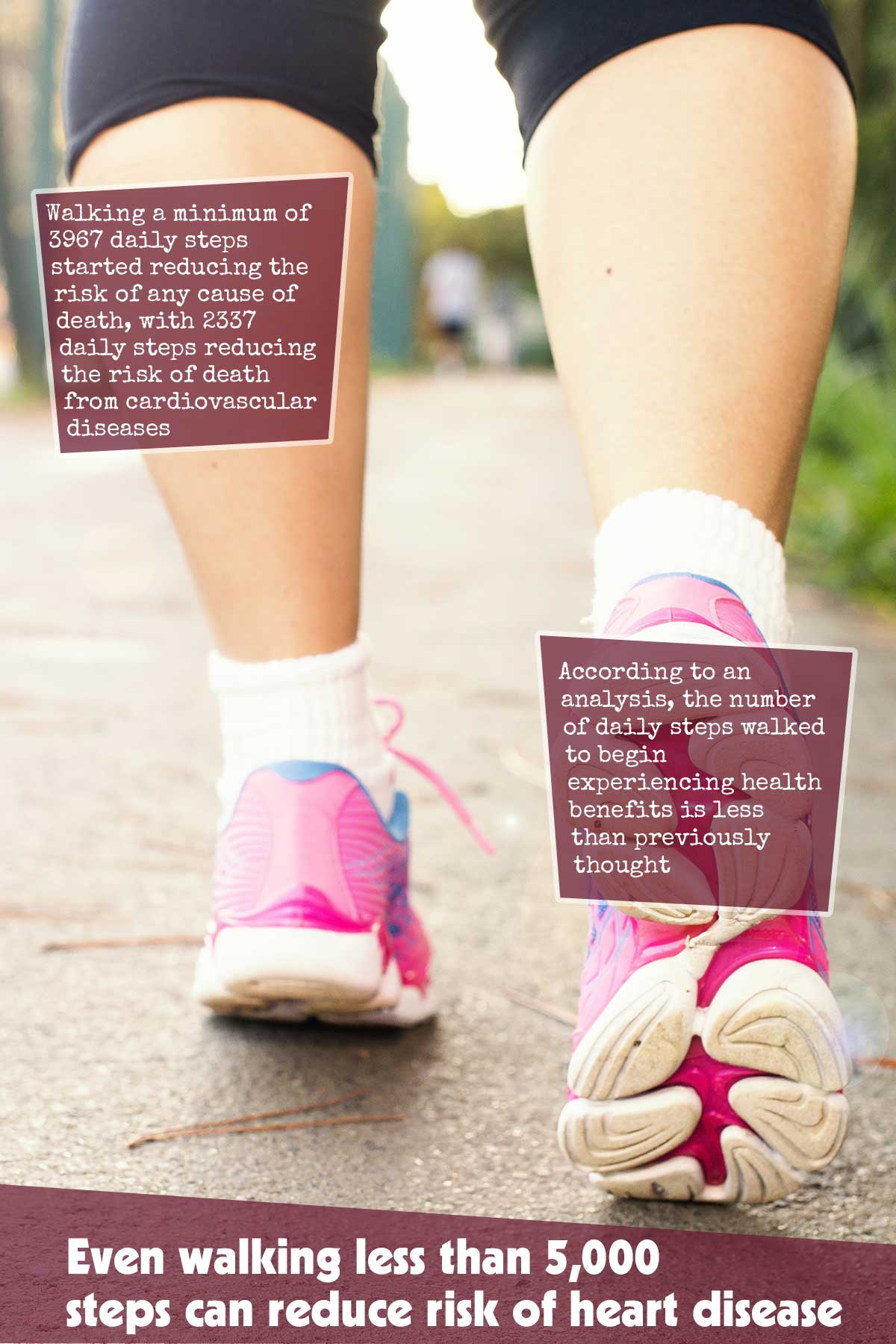According to an analysis, the number of daily steps walked to begin experiencing health benefits is less than previously thought.1✅ JOURNAL REFERENCE
DOI: 10.1093/eurjpc/zwad229
The study determined that walking a minimum of 3967 daily steps started reducing the risk of any cause of death, with 2337 daily steps reducing the risk of death from cardiovascular diseases.
This analysis involving 226,889 individuals from 17 different worldwide studies has however revealed that the health benefits are greater with more steps walked. The risk of any cause of death or from dying from cardiovascular disease diminishes considerably with every 500 to 1000 additional steps walked.
An increase of 1000 daily steps was linked to a 15% reduced risk of any cause of death, and an increase of 500 steps daily was linked to a 7% reduced risk of death from cardiovascular disease.
It was observed that even if individuals walked as many as 20,000 daily steps, the health benefits carried on increasing. An upper limit hasn’t been found yet.
The results confirm that the more steps walked the better, and this applies to both women and men, regardless of age, and regardless of whether living in a temperate, sub-polar, or sub-tropical part of the world or a mixed climate region.
The analysis also suggests that as little as 4,000 steps daily are necessary for reducing any cause of death, and even less for reducing cardiovascular disease deaths.
There is significant proof that a sedentary lifestyle can contribute to an increase in premature death and cardiovascular disease. Research has found that inadequate physical activity impacts over 25% of the population worldwide. More women than men and individuals in countries with a higher income in comparison to lower-income countries don’t get an adequate amount of physical activity.
Inadequate physical activity is the 4th most common cause of death worldwide according to WHO data, with 3.2 million yearly deaths associated with physical inactivity. Physical activity also declined as a result of the COVID-19 pandemic and activity levels still haven’t recovered.
It’s been unclear what the optimum number of steps is regarding the cut-off points before health benefits are experienced, as well as the upper limit and how this contributes to health.
There was however limited data on up to 20,000 daily step counts and so these results should be verified in larger groups of individuals.
This meta-analysis not only assessed the impact of walking up to 20,000 daily steps, but also considered if there are any differences according to sex, age, or in which country the individuals lived.
The participants in the studies analyzed were followed up for 7 years on average. The age of the participants was 64 on average, and 49% were female.
The rate of the risk of death reduction was less in individuals 60 years of age or older compared to that observed in individuals younger than 60 years of age.
A 42% risk reduction was observed in the older individuals walking between 6,000 and 10,000 daily steps, and there was a 49% risk reduction in younger individuals walking between 7,000 and 13,000 daily steps.
The meta-analysis’ strengths were its size and that it wasn’t restricted to considering studies limited to no more than 16,000 daily steps. As it was an observational study it could not prove that an increase in step counts resulted in the risk of death reduction, only that the step increase was linked to a reduction.
The effect of step counts wasn’t tested on individuals with various diseases; all the individuals were typically healthy when they started the studies analyzed. The differences in socioeconomic status and race could not be accounted for, and the counting of steps method wasn’t the same in all of the studies.




